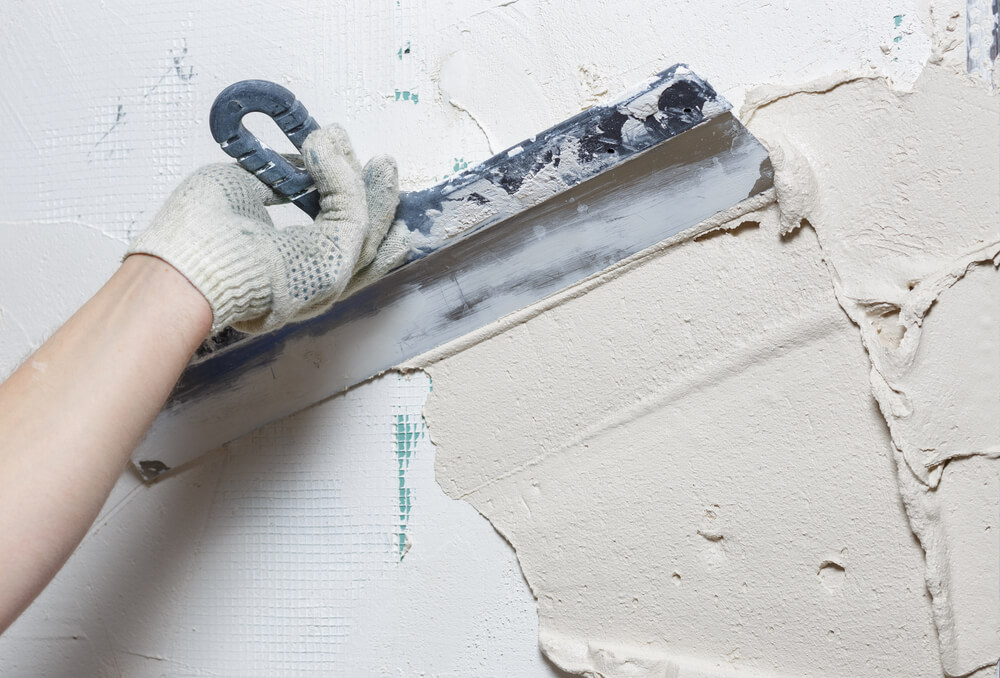More About Find A Plastering Professional Near Atlanta, Ga - Thumbtack


Picture: NPS files. Historic plaster might initially appear so filled with issues that its total removal seems the only alternative. But there are useful and historic factors for waiting. First, three-coat plaster is unrivaled in strength and sturdiness. It withstands fire and decreases sound transmission. Next, changing plaster is costly.
Of more concern to preservationists, however, original lime and gypsum plaster is part of the building's historical fabricits smooth shovelled or textured surface areas and subtle shapes stimulate the presence of America's earlier craftsmen. Plaster can also serve as a plain surface area for irreplaceable ornamental surfaces. For both reasons, plaster walls and ceilings add to the historical character of the interior and should be left in place and fixed if at all possible.
Dry wall repairs are not included here, but have been composed about extensively in other contexts. Lastly, this Short explains a replacement alternative when historical plaster can not be repaired. Hence, a veneer plaster system is gone over instead of dry wall. Veneer systems include a coat or coats of damp plasteralthough thinly appliedwhich can, to a greater extent, mimic conventional hand-troweled or textured surface coats.
How Starting Up A Plastering Business - A Guide By Startups.co.uk can Save You Time, Stress, and Money.
To fix plaster, a structure owner should frequently enlist the help of a plasterer. Plastering is a proficient craft, needing years of training and unique tools. While small repairs can be carried out by structure owners, the majority of repair work will require the help of a plasterer. Plasterers in The United States and Canada have relied on 2 products to create their handiworklime and gypsum.
Lime plaster was made from four components: lime, aggregate, fiber, and water. The lime originated from ground-and-heated limestone or oyster shells; the aggregate from sand; and the fiber from cattle or hog hair. Manufacturing changes at the end of the 19th century made it possible to use gypsum as a plastering product.
The contractors of this mid-18th century house installed the baseboard molding initially, then applied a mud and horse hair plaster. Lime was used for the surface plaster. Image: NPS files. Not only did the basic plastering product modification, however the approach of application changed also. In early America, the windows, doors, and all other trim were set up prior to the plaster was used to the wall.
About A S Plastering Services - Expert Plasterer In London
Obtaining a plumb, level wall, while working against built-up moldings, should have been hard. However at some point in the very first half of the 19th century, home builders began setting up wooden plaster "grounds" around doors and windows and at the base of the wall. Installing these grounds so that they were level and plumb made the task a lot easier because the plasterer might work from a level, plumb, straight surface area.
Evidence of plaster behind trim is typically an aid to dating historic homes, or to critical their physical development. When constructing a home, plasterers typically varieties of quick lime with water to "hydrate" or "slake" the lime. As the lime absorbed the water, heat was emitted. When the heat lessened, and the lime and water were completely mixed, the lime putty that resulted was utilized to make plaster.
However the finest plaster was done with three coats. The very first 2 coats comprised the coarse things; they were the scratch coat and the brown coat. The surface plaster, called "setting things," consisted of a much greater proportion of lime putty, little aggregate, and no fiber, and provided the wall a smooth white surface area finish.
Best Plaster And Drywall Services Near Me - August 2020 ... Things To Know Before You Get This
The building is situated in Frederick, Maryland Picture: NPS files. Compared to the 3/8-inch-thick layers of the scratch and brown coats, the finish coat was a simple 1/8-inch thick. Additives were utilized for numerous surface qualities. For example, fine white sand was blended in for a "float surface." This surface was popular in the early 1900s.
Finally, a little plaster of Paris, or "evaluated things," was often added to the surface plaster to speed up the setting time. Although lime plaster was used in this nation up until the early 1900s, it had certain downsides. A plastered wall might take more than a year to dry; this postponed painting or papering.
Around 1900, gypsum started to be utilized as a plastering material. Gypsum starts to cure as quickly as it is blended with water. It sets in minutes and totally dries in 2 to 3 weeks. Historically, plaster made a more stiff plaster and did not require a fibrous binder. Nevertheless it is tough to inform the difference in between lime and gypsum plaster once the plaster has cured.
The Ultimate Guide To Find Plasterers Near You - Bidvine
Drawing: NPS files. Despite these desirable working characteristics, gypsum plaster was more susceptible to water damage than lime. Lime plasters had actually often been applied directly to masonry walls (without lathing), forming a suction bond. They might endure occasional wind-driven moisture or water winking up from the ground. Gypsum plaster required defense from water.
click here